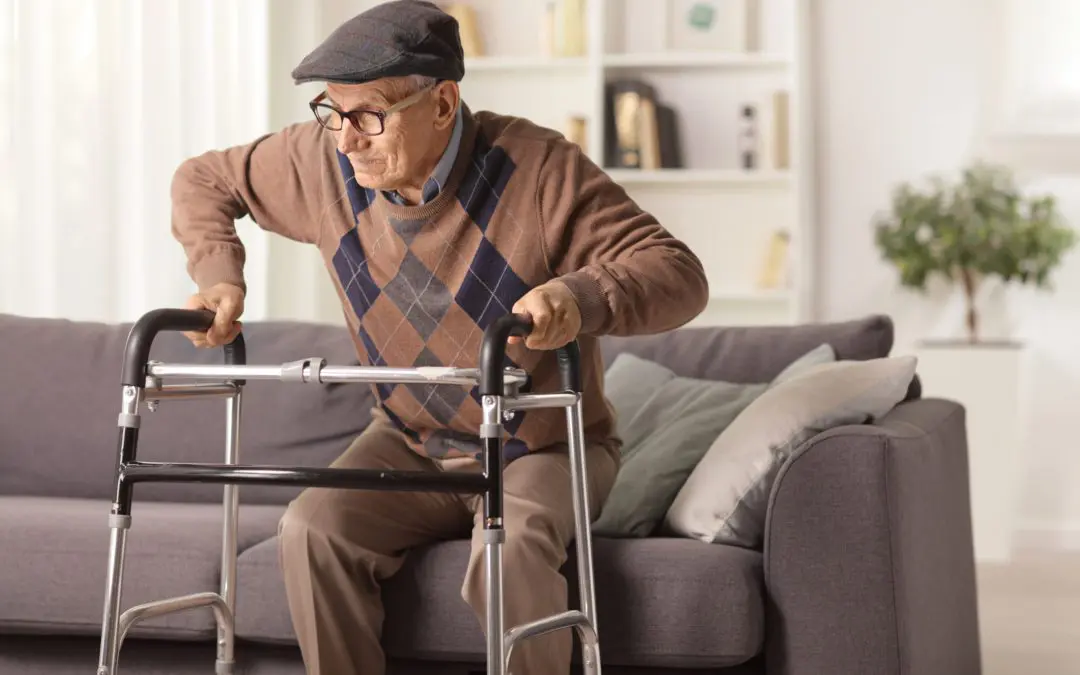Mobility issues can significantly impact the quality of life of seniors. As we age, our bodies naturally experience changes that can lead to reduced mobility, such as muscle weakness, joint pain, and balance problems.
This blog post will discuss the various causes of mobility issues in seniors, how to identify them, and strategies for managing and improving mobility to help seniors maintain their independence and overall well-being.
Contents
Causes of Mobility Issues in Seniors
Several factors contribute to mobility issues in seniors, including:
- Muscle Weakness and Loss of Muscle Mass: As we age, our muscles gradually lose mass and strength, a condition known as sarcopenia. This can make it more challenging for seniors to perform everyday tasks and move around comfortably.
- Joint Pain and Arthritis: Joint pain is common in older adults due to joint wear and tear over time. Arthritis, in particular, can cause inflammation, stiffness, and joint pain, making it difficult for seniors to move without discomfort.
- Balance Problems: Age-related changes in the inner ear and nervous system can affect balance and coordination. Balance issues may also be caused by certain medications or medical conditions, such as Parkinson’s disease or a stroke.
- Chronic Health Conditions: Diabetes, heart disease, and other chronic health conditions can contribute to mobility issues in seniors. For example, nerve damage from diabetes can lead to decreased sensation and muscle weakness in the feet and legs.
- Obesity: Carrying excess weight can put additional strain on joints and muscles, increasing the risk of mobility problems.
- Inactivity: A sedentary lifestyle can contribute to muscle weakness, joint stiffness, and balance problems, all of which can lead to mobility issues in seniors.
Identifying Mobility Issues
It’s essential to recognize the signs of mobility issues in seniors so that they can receive the appropriate support and interventions. Some common signs of mobility problems include:
- Difficulty walking or moving around
- Frequent falls or near-falls
- Unsteady gait or balance
- Difficulty getting up from a seated position or rising from a bed
- Reliance on assistive devices, such as canes or walkers
- Avoidance of activities that require movement
- Pain or discomfort while moving
If you notice any of these signs in yourself or a loved one, it’s essential to consult with a healthcare professional for an assessment and recommendations.

Strategies for Managing and Improving Mobility in Seniors
Several strategies can help seniors maintain and even improve their mobility, including:
- Regular Exercise: Engaging in regular physical activity is crucial for maintaining muscle strength, joint flexibility, and balance. Seniors should aim for at least 150 minutes of moderate-intensity aerobic exercise per week and muscle-strengthening activities on two or more days per week. Examples of suitable exercises for seniors include walking, swimming, chair yoga, and resistance training using bands or light weights.
- Physical Therapy: A physical therapist can develop a personalized exercise program to address specific mobility issues, such as muscle weakness or balance problems. They can also guide on using assistive devices, like canes or walkers, to ensure proper usage and safety.
- Occupational Therapy: Occupational therapists can help seniors adapt their living environment and daily routines to accommodate mobility challenges. This might involve suggesting home modifications, such as installing grab bars or ramps or teaching seniors how to perform tasks more easily.
- Pain Management: Addressing joint pain and inflammation can help improve mobility in seniors. This may involve medication, physical therapy, or alternative treatments like acupuncture or massage. Working with a healthcare professional to determine the best pain management strategy for each individual is essential.
- Maintaining a Healthy Weight: Losing excess weight can help reduce strain on joints and muscles, making it easier for seniors to move around. A balanced diet and regular exercise are key components of maintaining a healthy weight.
- Proper Footwear: Wearing supportive, well-fitting shoes can help improve balance and reduce the risk of falls. Seniors should choose footwear with non-slip soles, adequate cushioning, and good arch support.
- Assistive Devices: Canes, walkers, and wheelchairs can provide additional support for seniors with mobility issues. It’s essential to consult with a healthcare professional or therapist to ensure that the device is appropriate for the individual’s needs and that they understand how to use it correctly.
- Regular Check-Ups: Regular medical check-ups can help identify and address any underlying health conditions contributing to mobility issues. Seniors should discuss any concerns about their mobility with their healthcare provider during these visits.
Conclusion
Mobility issues are common among seniors, but there are many strategies available to help manage and improve their ability to move around comfortably and safely. By identifying mobility problems early and taking steps to address them, seniors can maintain their independence and enjoy a better quality of life. Remember, it’s essential to consult with a healthcare professional to develop a personalized plan for managing mobility issues in seniors.

